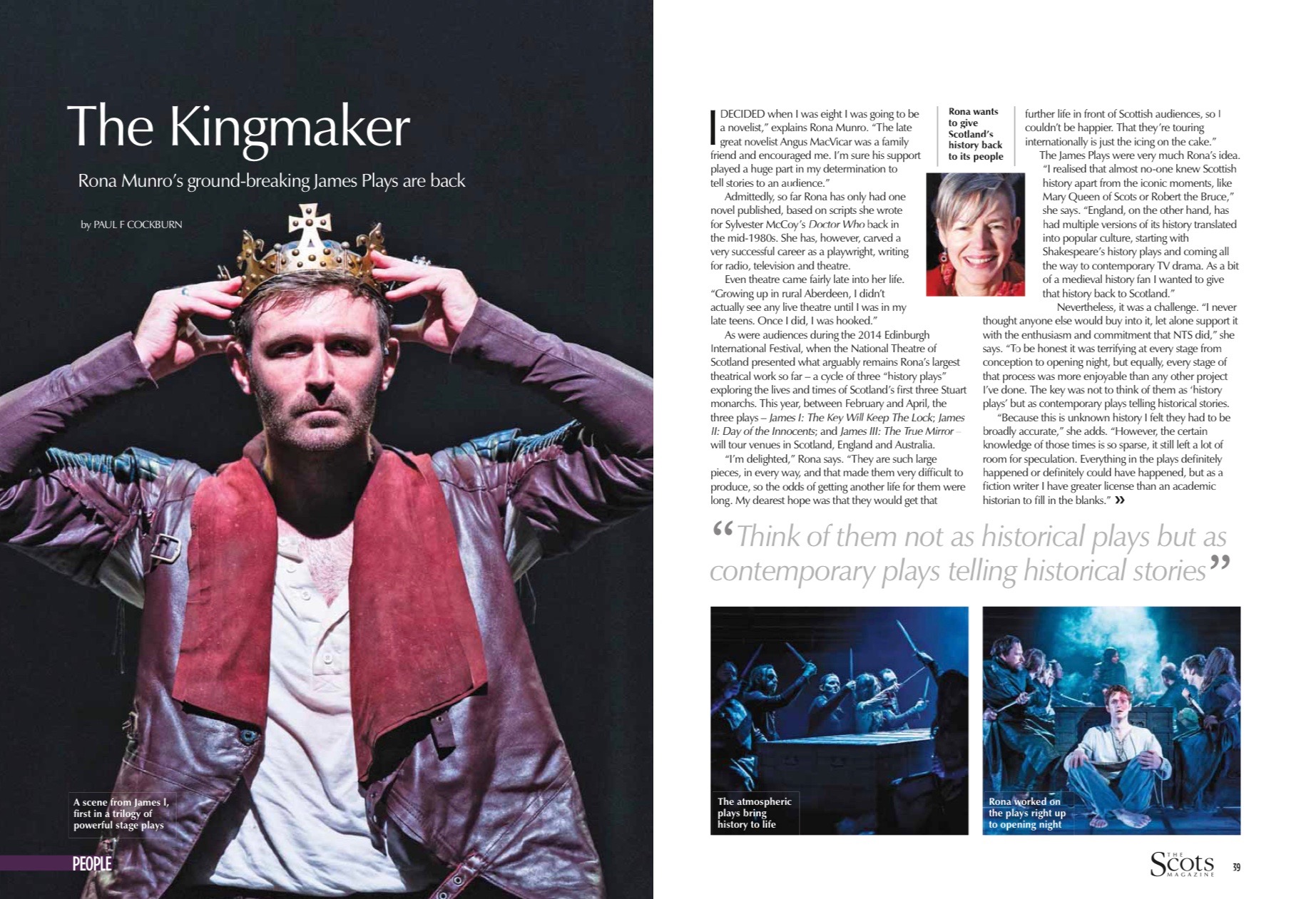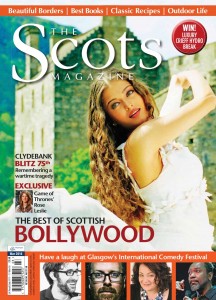
“I decided when I was eight I was going to be a novelist,” explains Rona Munro. “The late great writer and novelist Angus MacVicar was a family friend and relative and he encouraged me from that very early age. I’m sure his support played a huge part in my determination to tell stories to an audience.”
 Admittedly, so far Rona has only had one novel published, and even that was based on scripts she wrote for Sylvester McCoy’s Doctor Who back in the mid-1980s. She has, however, since carved a very successful career as a playwright, writing for radio, television and theatre.
Admittedly, so far Rona has only had one novel published, and even that was based on scripts she wrote for Sylvester McCoy’s Doctor Who back in the mid-1980s. She has, however, since carved a very successful career as a playwright, writing for radio, television and theatre.
That said, even theatre came fairly late into her life. “Growing up in rural Aberdeen I didn’t actually see any live theatre till I was in my late teens. Once I did, however, I was hooked.”
As, indeed, were audiences during the 2014 Edinburgh International Festival, when the National Theatre of Scotland and National Theatre of Great Britain presented what arguably remains Rona’s largest theatrical work so far – a cycle of three “history plays” exploring the lives and times of Scotland’s first three Stuart monarchs.
Between February and April, the three plays – James I: The Key Will Keep The Lock; James II: Day of the Innocents; and James III: The True Mirror – will tour venues in Scotland, England and Australia. “I’m delighted,” Rona says of the NTS revival. “They are such large pieces, in every way, I knew that made them very difficult to produce, so the odds of getting another life for them were aways going to be shorter. My dearest hope was that they would get that further life in front of Scottish audiences, so I couldn’t be happier. The fact that they are also touring internationally is just the icing on the cake.”
The James Plays were very much Rona’s idea. “I was brought up with stories of Scottish history but, as an adult, I realised that almost no-one knew Scottish history apart from the obvious iconic moments, like Mary Queen of Scots or Robert the Bruce,” she says. “England, on the other hand, has had multiple versions of its history translated into popular culture, starting with Shakespeare’s history plays and coming all the way to contemporary TV drama. As a bit of a medieval history fan I wanted to give that history back to Scotland.”
Nevertheless, it was a challenge. “It was my idea and I never thought anyone else would buy into it, let alone support it with the enthusiasm and commitment that NTS did,” she says. “To be honest it was terrifying at every stage of the process, from conception to opening night – but equally, every stage of that process was more enjoyable than any other project I’ve ever done. To me the key was not to think of them as ‘history plays’ but rather as contemporary plays telling historical stories.
“Because this is unknown history I felt they had to tell the story in a way that was broadly accurate,” she adds. “However, the certain knowledge of those times is so sparse, that still left a lot of room for speculation and invention. Everything in the plays definitely happened or definitely could have happened. However as a writer of fiction I have far greater license than an academic historian would have to fill in the blanks.”
Part of that process occurred during the original production. “I was in the rehearsal room almost every day and making small and not so small changes right up to opening night,” she says. “These plays really were produced in collaboration with director Laurie Sansom (Artistic Director of NTS) and associate director Amanda Gaughin, the designer, movement director and the company of actors. With work on such a large scale, and all untested by audiences, I don’t think we could have done it any other way. I really needed that talented team.”
In stark contrast to the scale of James Plays, Rona continues to enjoy a long and fruitful collaboration with Fiona Knowles, and they continue to tour a succession of one-woman shows under The MsFits Theatre Company banner.
“The MsFits came from a particular time in women’s politics and Scotland’s politics,” Rona says, “but the plays have continued to develop over 30 years. Those shows take me back to my very first theatrical experiences and represent my longest professional friendship, collaborating with the wonderful Fiona Knowles.”
Last Christmas she also collaborated with Stephen Greenhorn, writer of the Proclaimers musical Sunshine on Leith, on Tracks of the Winter Bear, two one-act plays produced by Edinburgh’s Traverse Theatre.
“Stephen and I are old friends, a friendship which started properly when we first collaborated, several years ago, on a play called Gilt for 7:84 Scotland,” she says. “We know each other a lot better now than we did then and I think what surprised us both was how compatible these two plays became, given the small amount of active collaboration. We had a series of conversations before we started but wrote in complete isolation.
“The Traverse staged my first ever professional stage production, Fugue, back in 1982,” she adds. “Since then I’ve had a further five productions there and have performed in both the old Traverse in the Grassmarket and what I still sometimes think of as the ‘new’ space. As long as it remains a home for new Scottish plays and playwrights I’ll always want to be there.”
With the James Plays back on stage, how does Rona view them now in terms of her own career? “Most new plays are produced on low budgets with small casts in studio spaces,” she points out. “I think I’ve shown not only that I can write on a far far bigger scale but that there is an audience appetite for new work that is larger than studio theatre. I’m not the only Scottish writer who has developed the maturity and skills to deliver that but I’m one of the lucky few who’s had the chance to do so.”
It’s almost impossible, of course, to earn a living just writing for the stage these days, but does Rona still prefer it to her radio and television work? “I adore writing The Stanley Baxter Playhouse plays for radio as I am still star struck every time I’m in the same room as the great man himself,” she says. “I love television and film too, as opportunities to reach that mass audience and to use different writing muscles.
“Live theatre, however, remains a particular excitement nothing else can match. Its the immediacy and the democracy a live audience brings to the experience. An audience will always be an active part of the narrative in theatre as their reaction shapes the story they see. No other dramatic form has that live relationship.”
Given that a significant supporting character in the third James Play is the monarch’s son, the future James IV, would Rona be interested in continuing the dynastic story – perhaps even to Shakespeare’s eventual patron James VI and I?
“I am following Laurie Sansom like a hungry puppy muttering ‘James IV, James IV…’ in a pleading whisper,” she laughs. “I may yet crack him. Start a petition!”
First published in The Scots Magazine, March 2016.